The late Stone Age (the Neolithic) was a colorful period in prehistory, where we begin to see unprecedented examples of human cooperation. Consequently, some of the most enigmatic and interesting archaeological sites date to this era. There are so many, in fact, that several amazing ancient sites simply become overlooked. So let’s take a look at some of the best ancient sites the Neolithic Era had to offer, focusing this time on Britain.
10. Carn Gluze, or the Ballowall Barrow

This ancient burial mound is stooped in notoriety. Located in the southwest of Britain in Cornwall, it was initially buried by debris from a nearby mine. Local legend suggests that it is involved in dark rituals, and that it is best avoided at night.
The whole thing is comprised of two concentric circles and an inner burial mound, with a surrounding circular wall – the mound would originally have stood several meters high. Within the mound, archaeologists discovered 5 chambers known as cists, with a variety of Bronze
9. Lanyon Quoit

This curious structure is known as a Dolmen, and is part of another tomb complex. Some Dolmens date back as far as 4000 BC, 2000 years older than the pyramids at Giza. Originally this structure was tall enough for a horse and its rider to pass underneath comfortably. In prehistory, it would have been surrounded by earth like a Barrow, but the soil has eroded away.
The large capstone on the top of the standing stones weighs a monstrous 13.5 tons; just maneuvering it would have required the help of dozens of men.
8. Men-an-tol or the Devil’s Eye
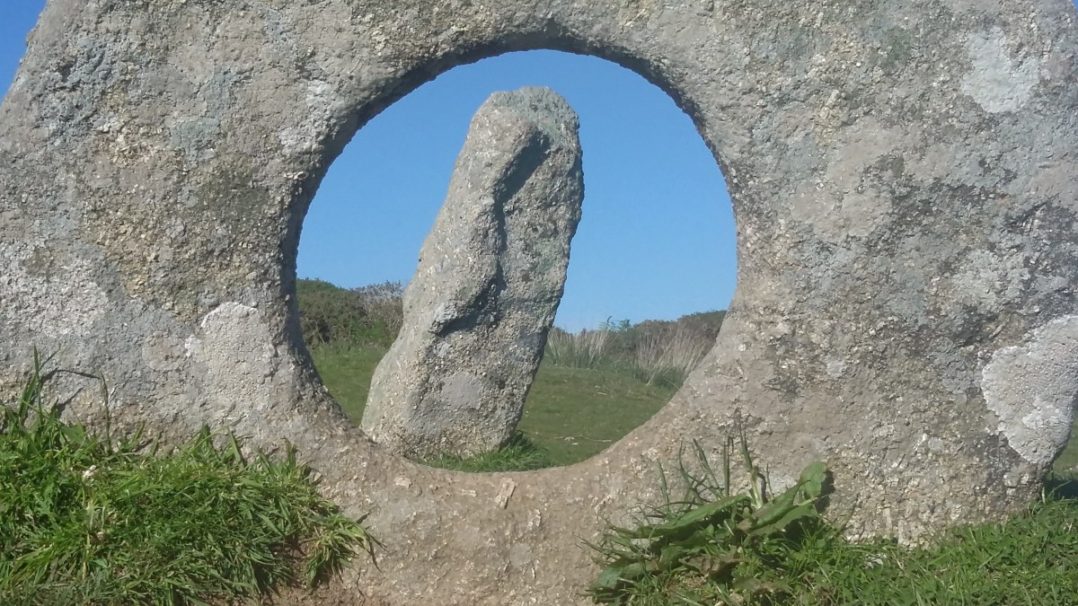
Men-an-tol literally means “the hole stone” in the original Cornish tongue. Little is known about the stones themselves, other than that they are crafted from very tough granite. It’s suggested that hundreds of man hours went into crafting the central stone. It is suggested that the circular stone was the entrance to an ancient tomb, or perhaps part of a calendar. These stones have existed here since the Neolithic, however they may have been moved by a local farmer after freak weather knocked some of them over.
The O stone was considered a cure for all ailments, and was used in healing rituals where children were passed through the circular stone to cure diseases. At a full moon, legend holds it that if a woman passes through the hole 7 times, she will fall pregnant.
7. West Kennet Longbarrow
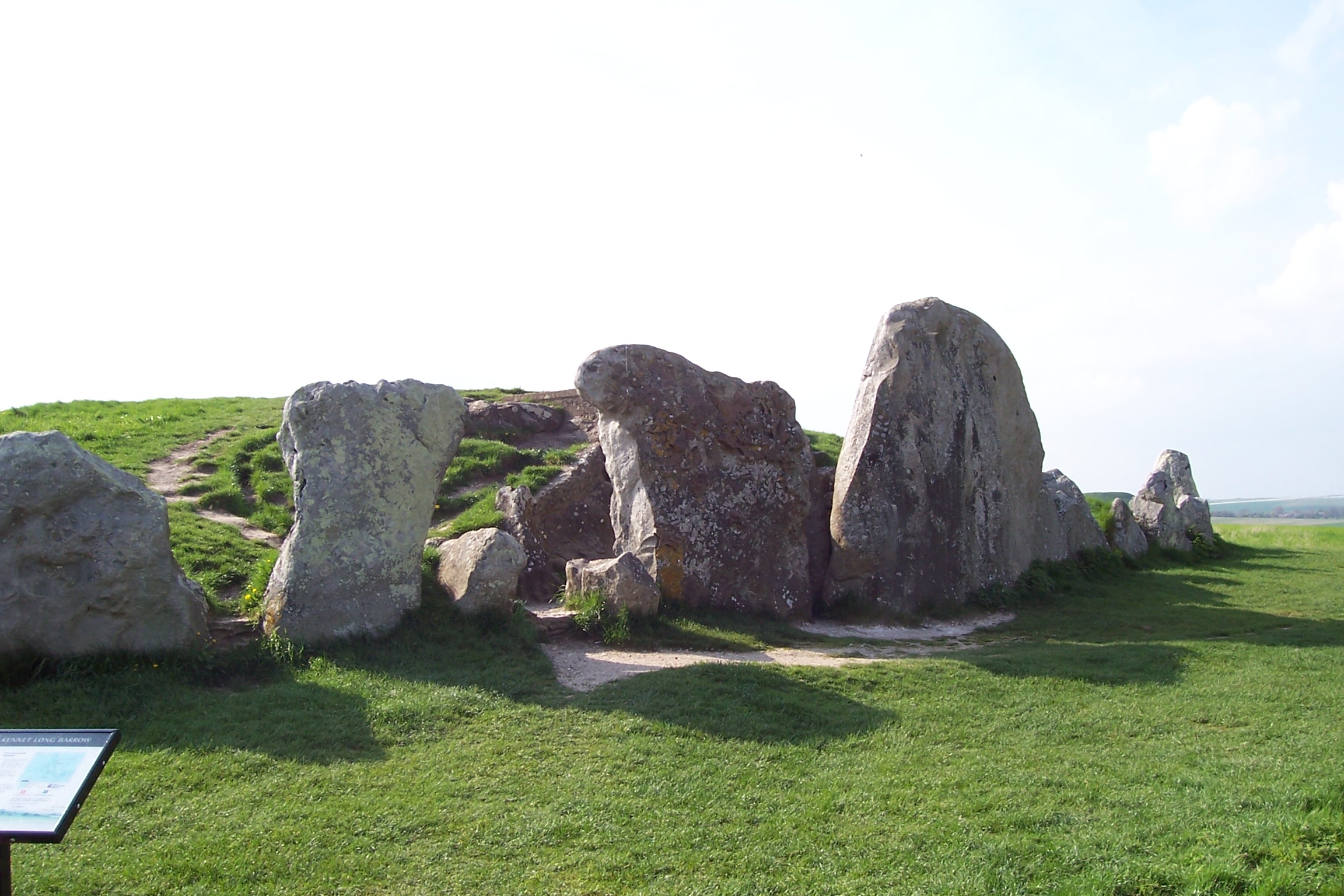
The Long-Barrow at West Kennet is simply humongous, stretching for well over 300 feet. Dating to 3600 BC, it is over 400 years older than Stonehenge. Unlike the previous tombs on this list, you can actually venture inside. The bottom right photo shows the view from the entrance into the chambers within. Archaeologists found more than 50 human skeletons inside; curiously, it seems that the bones had been separated out into different types and stored in the various rooms. Periodically, the large façade stone visible in the top photograph was moved over the entrance way to block it off from would-be grave robbers.
This front stone is also suggested to be the backdrop for burial rituals that will have occurred before the dead were taken inside. During the 1000 years that the burial mound was in use, a popular type of ritual was in use known as the sky burial. Archaeologists believe that the bodies of the deceased were laid out on, or nearby, the burial bound itself. Once stripped by the elements, the individual bones were conveyed inside and sealed up.
6. The Rollright Stones
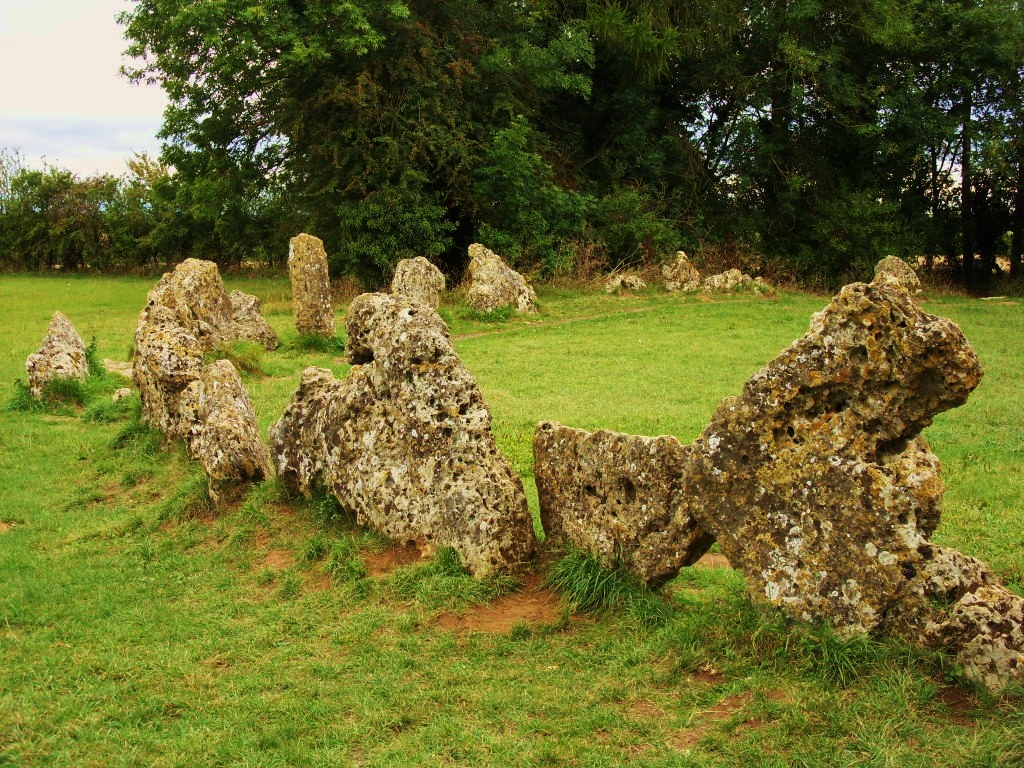
This complex is comprised of several different structures, the most interesting of which is called the Kingsmen, depicted here. These standing stones are laid out in a perfect circle, ranging in height from just several inches to 7-8 feet high. It is believed that the stones originally touched each other, forming a perfect continuous circle. Archaeologists uncovered evidence of burnings within the circle itself; perhaps this is indicative of ancient feasting or sacrificial rituals that may have occurred within.
5. The Devil’s Arrows
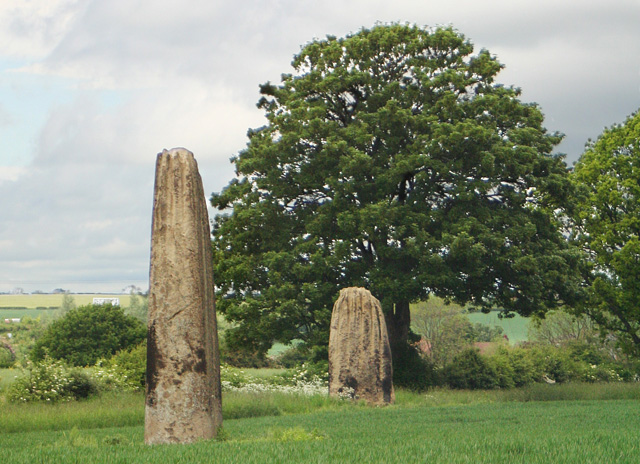
The devils arrows are three standing stones or Menhirs; they are etched with distinct grooves caused by centuries of rainfall. Running along a north-south alignment, these stones may have marked a tribal boundary or meeting place. It is thought that other ancient structures are in line with the stones, and they may have been a way marker as part of a pilgrimage. Very little, however is known about these stones. Local legend suggests that these stones were thrown at the nearby town of Aldborough, but the Devil missed and so the stones remain.
4. Stonehenge
One of the most iconic sites in the world, Stonehenge has captured the imaginations of archaeologists for centuries. Interestingly, it isn’t a henge at all – normally, Henges are defined as having an outer circular bank of soil with an internal circular ditch, but Stonehenge has an internal bank and outer ditch.
Stonehenge is an unprecedented example of cooperation in a country where the population would have been very low and hugely dispersed. The 80 blue stones which form the inner circle, each of which weighed over a ton, were transported from over 240 miles away in Wales – the movement of these alone would have required a great level of coordination, and is an awesome achievement in itself. But the larger sarsen stones weigh several tons, and would have required an advanced knowledge of pulleys or an immense amount of man-power to erect. The capstones, or lintels, were attached to the uprights with mortis and tenon joints.
It is believed that Stonehenge was used as a crematorium or temple, to celebrate the lives of the deceased. It is linked by a ritual causeway to the nearby river, which in turn is linked to another henge called Durrington Walls, which had wooden posts instead of stone. One theory suggests that at Durrington Walls, people celebrated the life of the deceased before travelling downriver to Stonehenge, where they would celebrate the death of the individual.
3. Skara Brae

Skara Brae is one of the most well-preserved sites on this list. Located on the Scottish island of Orkney, it is commonly referred to as Scottish Pompeii, because of its level of preservation.
Essentially, the site is a submerged town built into an old prehistoric rubbish dump, known as a middens. Some archaeologists suggest that this particular site dates back to the 3rd millennium BC.
It’s actually a very useful site, as it can tell us so much about ancient life. We know that the inhabitants were mass producers of a type of potter called grooved ware, which was wide spread throughout the UK. Each house measures about 131 square feet and contains a central hearth. It is believed that the occupant used to heat their homes by burning local peat. They also had a diet that mainly consisted of seafood mainly based on finds of seaweed and shells. Each house has its own stone furniture, including cupboards, seats, dressers and storage boxes, and a door that was lockable from the inside. Even more impressively, each house has a sophisticated drainage system and a primitive version of the modern toilet.
Much contention surrounds the site, with some archaeologists believing that the people who lived here were simple pastoral farmers, and others suggesting that they were a group of high-ranking theocrats and considered the local wise men, almost like the Ephors of ancient Greece.
2. Cheddar Gorge
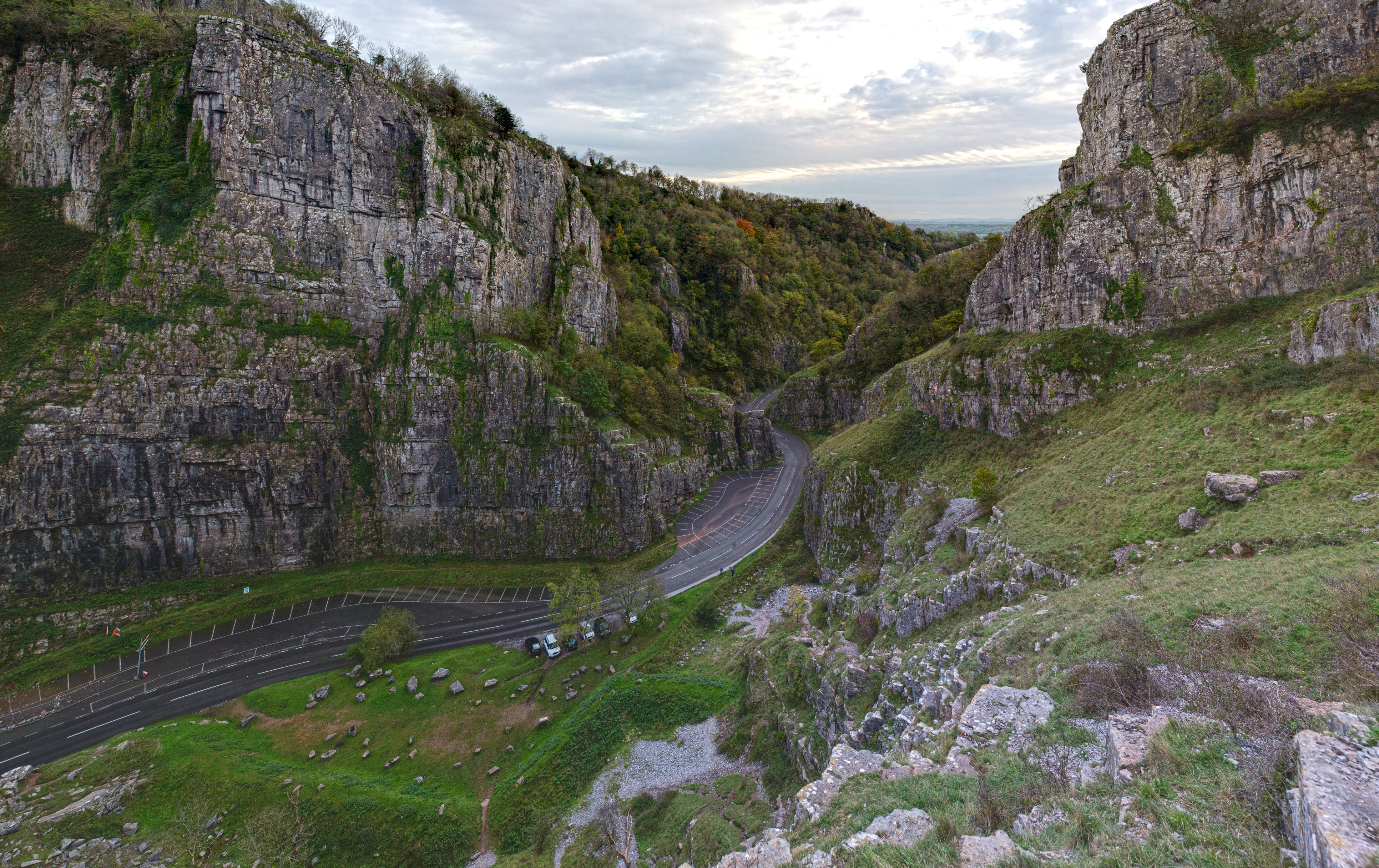
Cheddar Gorge, often seen as Britain’s answer to the Grand Canyon, is without a doubt the oldest archaeological site on this list. The 449-foot deep gorge contains a myriad of different Stone Age sites, the oldest of which date back to the upper late Paleolithic (the early Stone Age) – nearly 12,000 years ago, predating some of the earliest Egyptian cultures.
The gorge contains a series of caves, the two main ones being Gough’s Cave and Cox’s Cave. It was Gough’s Cave where archaeologists discovered the earliest complete human skeleton. Called the Cheddar Man, this skeleton is over 9000 years old, and shows signs of a violent death. Possibly the victim of cannibalism, the skull of this individual was found with a potentially fatal injury.
Other early finds, such as flint axe heads and flint arrowheads, have also be disinterred from parts of the site, indicating a possible early hunter-gatherer society. Both of the caves may have been used for prehistoric cheese making, hence the name.
1. Newgrange

Newgrange is one of the most overlooked sites in the United Kingdom – bigger and older than Stonehenge, the huge burial mound forms part of the 5000 year old Bru na Boinne complex.
Standing at over 36 feet wide and 249 feet across, this site is truly monumental in scale. Around the periphery of the mound is a white quartz façade, reconstructed, as the old façade had been partially eroded. The stones alone used in the construction of this site would amount to 200,000 tons. Earth would have been piled up by possibly hundreds of workers, and would have taken engineers of considerable skill to supervise its construction.

Inside is one of the largest tombs in western Europe – the 60 foot passage is almost cruciform in shape, and is accessed by a highly decorated entrance on the southeastern side.
This tomb may have originally contained the bones of local tribal leaders or wise men. If so, it would technically be termed an ossuary as, at this time, ex-carnation or the sky burial was a common practice, whereby they would lay the dead outside, let the elements strip the body to the bones, and then store these bones in tombs. Finally, this site contains a rare example of Neolithic rock art; as seen on the entrance, these abstract swirls would have required considerable skill to produce.

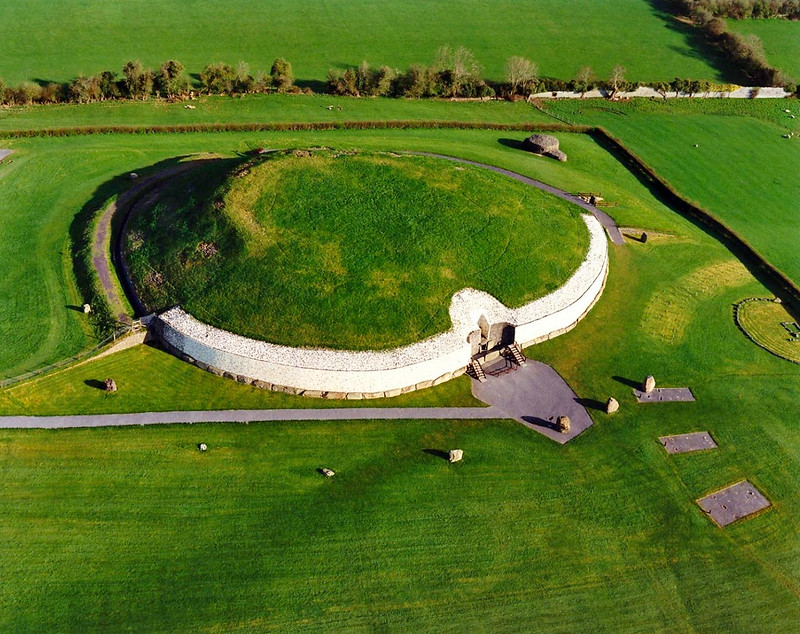
17 Comments
I’m almost tempted to let this one pass, but if you merely refer to The British Isles should any such occasion arise in the future you encompass Great Britain and its’ islands together with the whole of Ireland. After all, it’s all about the sites, right? Let’s not get ourselves in etymological knots! BTW, in terms of sites per square mile, West Penwith in the toe of Cornwall really packs a punch. Not only is there the Men an Tol and Carn Gluze, there’s The Merry Maidens, Chysauster (prob Bronze Age rather than Neolithic), Carn Euny and the sites of pagan worship, very early churches etc. Jan Norrish, if you’re coming over for Solstice, try and make it to Stonehenge and I’ll buy you a coffee!
Jeez A. C. Tuffey are you not sorry you started what was meant to be an enlightening thread only to see it degenerate into political correctness & ignorance gone wrong?? On the other hand, I fail to see political correctness can go right.
I looked at your site because I’m planning a trip to UK in June 2017 in order to take in lots of ancient history and Royal Ascot. I thought your information great.
Chin up mate. Remember, as someone once told me:: you can’t educate idiots. 🙂
hi i like ur psot can i get som chocolate and milk ad ice tea with it that would be nice thank you because this is great
Saw the title and knew Newgrange would be number 1…
“Newgrange is one of the most overlooked sites in the United Kingdom”. That’ll be because it’s not in the UK
See my reasoning in the earlier comment – I simply didnt want to leave newgrange out – It was likely built by Scotsmen – the cultural nomenclature is a misnomer in this respect – none of these sites are ‘British’.
The Windmill hill people for example constructed stone henge – then it was edited by the beaker people – from the Iberian peninsular – West Kennet was affected by Transmanche inclusions from Brittany.
New grange was likely influenced by the proto-beaker culture. So you’ll forgive my pandering to the masses by cutting 95% out of an academic essay and quickly rewriting it for a wider audience and ill forgive you your pedantry…
Why did you say newgrange was in the uk and it was built by irish people not scots and as an irish person i find it offensive ireland is also not part of britain
Be offended – its not going to change anything. Its not going to make you any more right.
The fact that you think social divisions from the modern day apply in the prehistoric era – just goes to show how politicized archaeology is currently, and also highlights how wrong you are.
You obviously didn’t read my riposte correctly – what we now know as Scotland, and what we now know as Ireland were in fact populated with the beaker people – beaker migrations, as we know from ceramic typography, started in central France and moved into Britain Scotland and then Ireland. So if you want Newgrange was built by the french.
But we don’t use modern geographical terms because they are wrong – the only reason they are utilized is to make it easier for people who don’t know the subject to conceptualize where it is that we are talking about.
If it suits you the Irish no more built new grange than the English built stone henge.
Neolithic Britons – (coming from the Latin to refer to the whole of Britain and Ireland) share similar traits – that are archetypal of one particular culture. So its easier to put them together. Like it or not you don’t get to decide this the science does.
as i said I put them together because they were typologically similar – yes ireland and Britain very different – the cultures prevalent in both during the construction of newgrange and most of the sites in Salisbury – the same. very much the same.
The complaint about saying Newgrange is ‘one of the most overlooked sites in the UK’ is simply that the ‘UK’ is only a contemporary political entity, which does NOT include Newgrange, so it confuses and offends some people. The British Isles is a better term. I accept all your comments about the past having a very different human geography but just use the ‘Top ten sites in the British Isles’ as a title. I suppose, to really dumb it down, you could call it the ‘Top ten sites in London.’
I’m disappointed that Keith Richards wasn’t on this list.
AHHHHHHHHHHHHHHHHHHHHHHH
agreed! I was bought up in that that area (east Kennett|) and although the barrow is interesting avebury is more historically recognised and it is very odd that it has been missed off!
Erm…..Avebury? Far larger than Stonehenge, far more impressive. It’s a stones throw from West Kennet Long Barrow and Silbury Hill (maybe you could have included the three as one item due to their proximity).
Andy – You are indeed correct – Love Avebury – didn’t include it though as for varieties sake I wanted to cut down on Henge like structures. – If i write another list i shall be certain to include it.
Actually Newgrange is in Republic of Ireland and not the UK 😉
Cheers – Ole
Ole – This is true – However I deemed it acceptable as the techniques in its construction may well have been of Scottish design. I did deliberate on the matter, and decided upon the title for brevity – it had a more academic title originally – but it was far too long-winded . thanks for the input.
Good explanation – Thank you.
AND i forgot to mention: Great list 🙂
thank you very much – greatly appreciated 😀